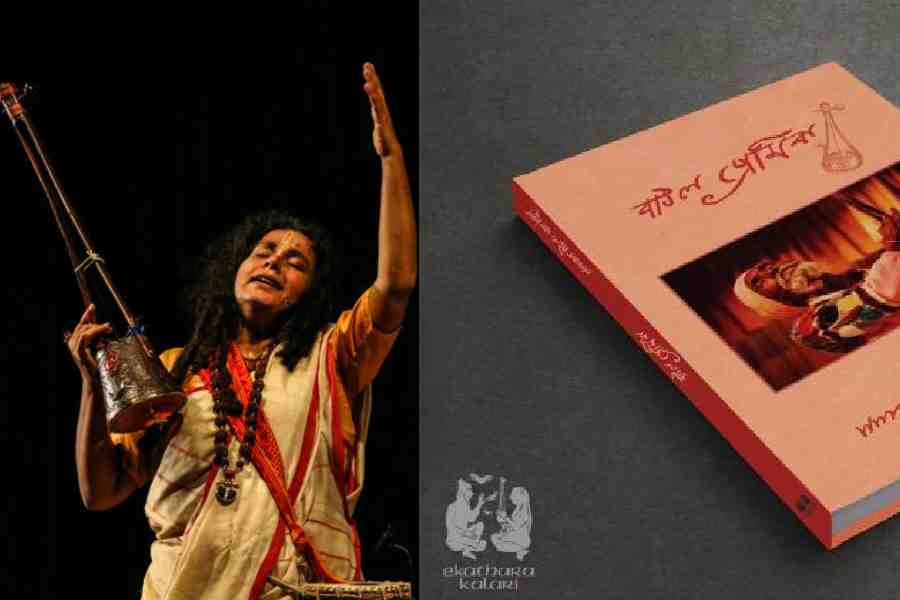After the success of three editions and the need for a comprehensive edition that talks about the Baul tradition in its true sense and that connects with modern readers, the fourth edition of Baul Premik became a necessity. Authored by the late Sanatan Das Baul, and compiled and presented by Parvathy Baul, an ardent follower and protégé of Sanatan Das Baul, the latest edition of the book will be launched today at ICCR in the presence of Baul masters, eminent scholars and authors. We caught up with Parvathy, a practitioner, performer, teacher and currently the lineage holder of the tradition, to know more about the updated edition and the relevance of the book. Excerpts.
This is the fourth edition of Baul Premik. How are you feeling now that it’s ready for the readers?
This book has been a dream and I am so glad that the dream has come true. The most important thing about Baul Premik fourth edition is that it is his entire life’s work. He started writing in the early ’80s and the first book was published at the end of the ’80s. An anthropologist who worked with him financed the book and it was worked upon by a Calcutta journalist who was also a devotee of Baba. It was printed in Bolpur, a thin book with a blue cover. I don’t remember the exact year of publishing but I guess it must have been at the beginning of the ’90s. Baba again started working on the book which was published by Ritaban Ghatak, son of famous filmmaker Ritwik Ghatak. It was published in Santiniketan Poush Mela in 1996 at the hand of Shantidev Ghosh, a student of Rabindranath Tagore. Though this book was well-appreciated, Baba started rewriting the book with unpublished materials and he started creating his own songs as well, which are there in this book. He gave me the manuscript in 2013 and left his mortal body in 2016, February and then I started working on the book. It took me seven years because I had to travel to different places and collect unpublished pictures of Baba from various sources and different parts of the world. He had a large following all over the world and in different walks of life. The third edition was published in 2022 in Delhi but I was not very happy with the result. Since the book is so close to my heart I wanted it to be perfect. So, I reworked the book and this is the fourth edition and I am praying that this is the last edition. I am very happy that it’s happening in Calcutta and people have been waiting for it.
Baul Premik has been reworked so many times. What is the intention of the book?
There has been very little literature on Baul. The texts that are used by the baul sadhaks are esoteric in their language, making it difficult for a normal person to understand. There have been other books as well, written by scholars in Bengal and even abroad, among them Kshitimohan Sen’s Banglar Baul is a great book. Upendranath Bhattacharya’s book is also very authentic, and there have been works by Bangladeshi authors as well. But they are mostly research scholar oriented and very academic.
So, Baba tried to create a bridge between the modern reader and the sadhus, which is a great initiative and it is the first of its kind written by a Baul practitioner. The book is about the ancient tradition, finding the meaning of the songs, the inner discipline of Baul sadhaks and being able to see beyond the sweet music. We have the misconception that it’s folk music but it is actually a yogic parampara.
Given that you were so close to Sanatan Das Baul, compiling the book must have been a big task?
It was certainly a big task but I am saying with a smile. The manuscript was scattered, incomplete and most of them had no dates and his demise added to my cluelessness. I had no one to talk to so I really had to absorb Baba into me and find out what he wanted. That’s why it took me long to compile the third book. Another major challenge was to publish the fourth edition in less than a year after the third one. This is a far better representation of Sanatan Baba’s intention in the book. Also, since the Baul tradition is an oral one we also have an audiobook in which I narrate and sing. The book also has a QR code via which one can listen to Baba’s songs.
Is the book biographical?
It is biographical in some ways. There are stories and even an interview which is transcribed in Baba’s style, Bankura-style, making it very original. So, it’s not exactly biographical in nature. There are experiences of how he learnt from his teachers, and then there are chapters from the point of view of his sadhana sangini, Mira Maa, how she experienced sadhana and how she was support for his sadhana. There are chapters also from his son Bishwanath Das Baul, who will be there at the launch.
